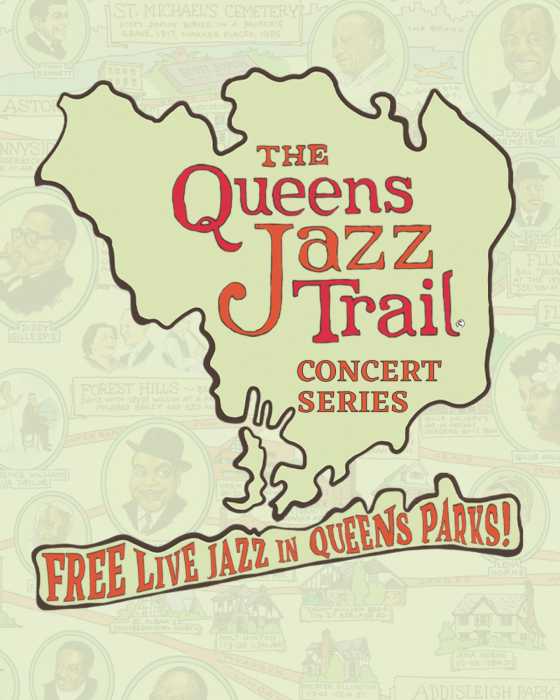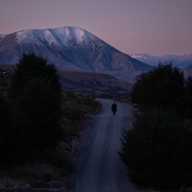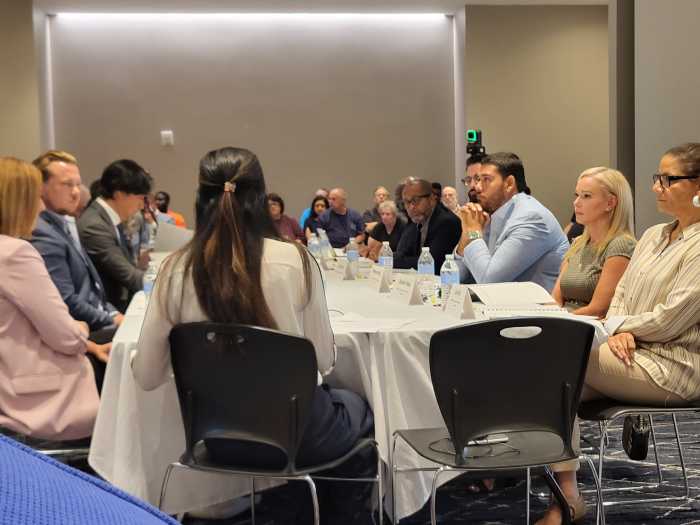In Williamsburg, Chris Yon solos, with new guests each night
All over New York City, a new generation of pioneers is taking root in places once considered too dangerous, too far, or too culturally disadvantaged to work or perform in.
True, many of the studios and performance spaces in Bushwick, Queens, and East Williamsburg are off the beaten path and sometimes hard to find, but these are the places where the rewards of undiscovered gems outweigh the risks of getting lost. These are the place where young artists are cutting their teeth. Like those before them who seized on the social and political power of alternative spaces, gallery, loft, and shoebox venues are sprouting up everywhere. While the impetus for the current movement may be driven less by an ideological point of view than one of simple economics, it is a fair indicator of just how loud and strong the dance and performance community has become.
Chris Yon and Karinne Keithley founded UR, on Grand Street in Williamsburg, in January 2003, as a “neighborhood dance palace” dedicated to the creation of hybridized performance work. The two use the space to develop their own work, as well as providing residencies for other artists. Yon presented his solo trilogy “Teardrop Terror” on a program with a different opening guest act each night, as a way to showcase some of the well-crafted, captivating work being made in the humble storefront.
Eleanor Bauer’s trio opened the Saturday night performance, a smart dance for herself, Anna Jordan, and the mercurial Neal Beasley. The short, formally structured work was cleverly configured for the rather narrow confines of the space, making use of the walls as much as the floor as surfaces for movement. Repetition, variation, kinetic relay, and sharp contrasts in dynamics marked the piece. Humor, dogged resignation, and the contemplation of failure as a fact of life shaped the content.
Watching Yon’s “Teardrop Terror,” performed October 24 to 26 with singular madness by Taryn Griggs, was like witnessing the self-delusional destruction-creation of one badly fucked up psyche. The descent is—like the incident that generates it, demonstrated in the opening scene with a childlike construction paper theater visual, a car crash—more like a headlong dive than a slow fall. Long, low hinged, slow motion walking is just one of the many odd movement motifs that keep the work and the performance teetering between funny and insane.
Griggs’s words, maxims, and phrases, adapted from the likes of Bergman, Richard Lapp, and Satie, are always spoken in the harsh underlighting of a red spotlight she switches on with her foot. They are often less important than the facial expressions she punctuates them with, which reveal that she is lying, or at other times, her contempt for our inability to understand her condition, like when she says, “I have the black plague.”
In between these full frontal direct addresses, manic, stamping phrases bring the quirkiness to another level, where delusions become paranoid schizophrenia and actions are downright dangerous. When Griggs drops to the ground, she throws herself. Autistic repetititions, like the waving of her hand in front of her face, begin as weird non sequiturs, and become fascinating, even alluring devices that serve to attract us to this world with no linearity, no connection from one moment to the next. But don’t get too close. She is another car crash waiting to happen, or so it would seem.
Interruptions, fast shifts, and odd gestures emerge over time, repeat in part, and recycle, as we are drawn into this character from a distance. The music, by Keithley, Roy Orbison, Nino Rota, Johann Strauss, and Frank Zappa, with additional sound design by Justin Jones, serves the work, creating suspense, irony, and tension to the funhouse, madhouse feeling.
The cry for help as performance pushes further into the ironic, the pathos of the tramp crosses the line of pathetic and back, when Griggs’s takes up a black marker and scrawls a black mark on the back wall with an arrow pointing to it indicating “black hole.” On the other side of the stage, she draws an arrow pointing down to the floor, writes, “me,” and then sits beneath it. Later she constructs a puzzle drawn on the side of white storage boxes, revealing ultimately, a childlike picture made with color markers of a burning house.
Yon has created a powerful character study of a mind lost in memory following a traumatic crisis. His approach to creation and choreography is rich and exhilarating, full of intelligent and intriguing movement decisions and dynamic contrasts. The integration of theatrical elements is also effective and adds meaning to the dance.
Too often with dance theater, this is not the case.
Even the lighting changes, which Griggs executed as part of her performance, plugging and unplugging lights from the wall sockets, seemed to happen when they did for a reason––a testament to how effectively the creator and performer drew us into their internal world. Even so, it was very easy watching this work to imagine it being performed in a space where lighting could isolate the performer, or certain phrases, to heighten the intensity of some of the truly mesmerizing occurrences of movement.




































